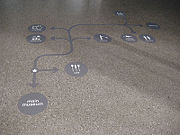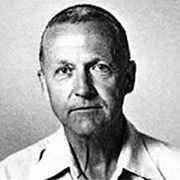Caitlin C Draft Two
From DigitalRhetoricCollaborative
(Difference between revisions)
(→Wayfinding) |
(→Wayfinding) |
||
| Line 9: | Line 9: | ||
==History== | ==History== | ||
| + | Wayfinding did not develop until the early 20th century. The term was coined by Kevin Lynch in <i>The Image of the City</i> in which he recognized the importance of an environmental image in wayfinding tasks. He divided the elements of a city into five distinct groups: paths, edges, districts, nodes, and landmarks. | ||
| + | [[Image:Kevin_A_Lynch.jpg|thumb|left|Kevin A Lynch]]<ref>[http://en.wikipedia.org/wiki/Kevin_A._Lynch Lynch Photo]</ref> | ||
Revision as of 18:58, 14 April 2015
Wayfinding
Wayfinding is the use of certain cues to navigate a physical or digital space. It is a termed coined by Kevin Lynch to describe environmental legibility, elements of an environment that allow successful navigation through complex spaces. [1] Originally used as a technique for navigating physical environments, it has become applicable in navigation of digital environments and web design.
Contents |
History
Wayfinding did not develop until the early 20th century. The term was coined by Kevin Lynch in The Image of the City in which he recognized the importance of an environmental image in wayfinding tasks. He divided the elements of a city into five distinct groups: paths, edges, districts, nodes, and landmarks.
[2]


